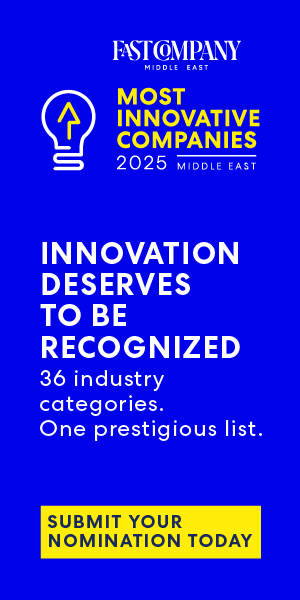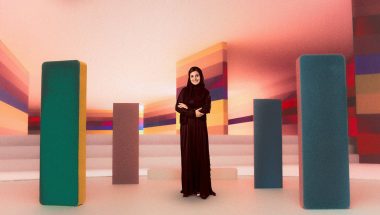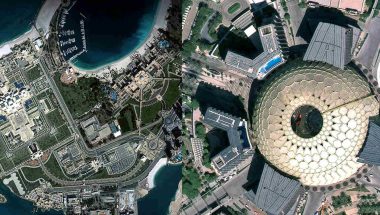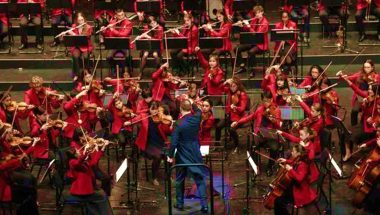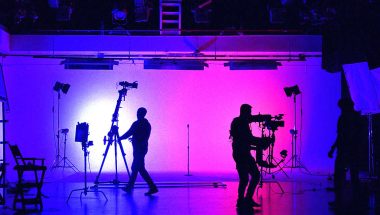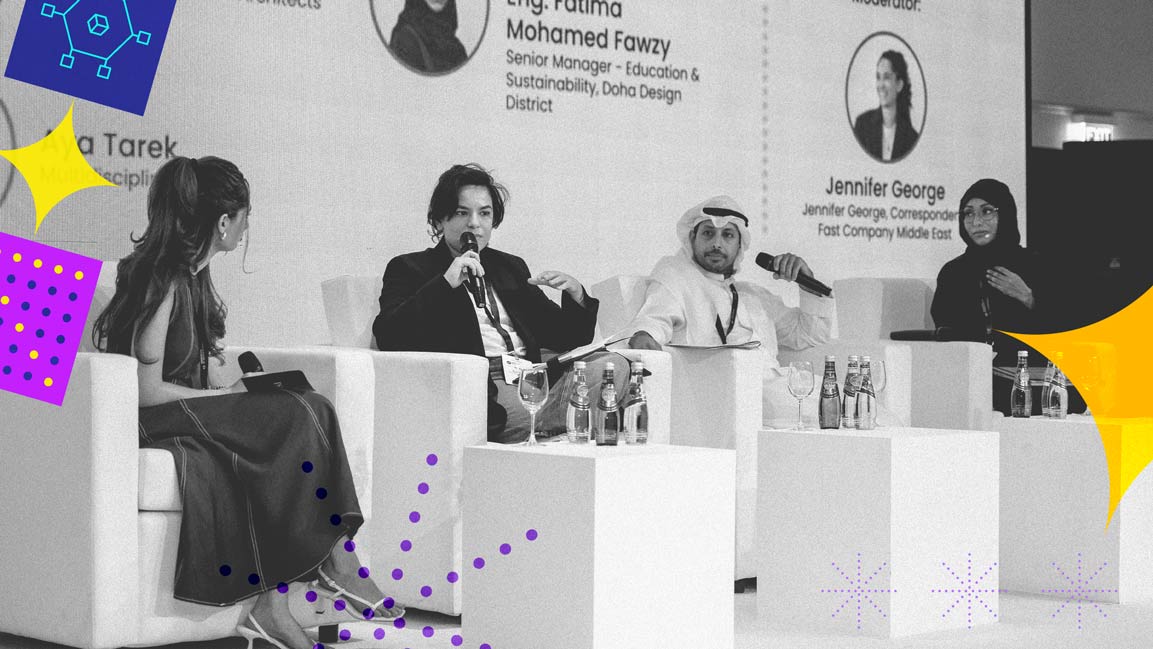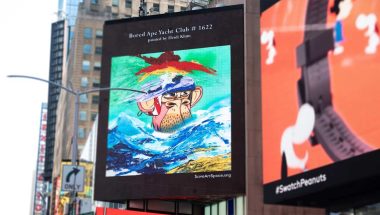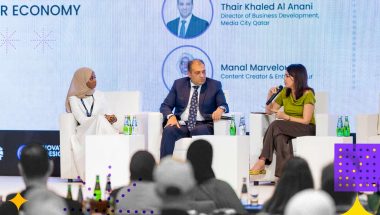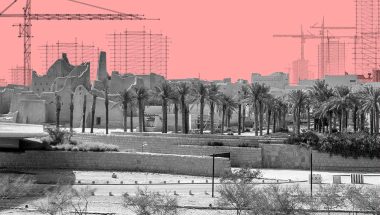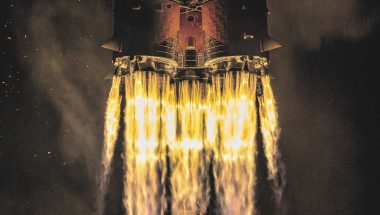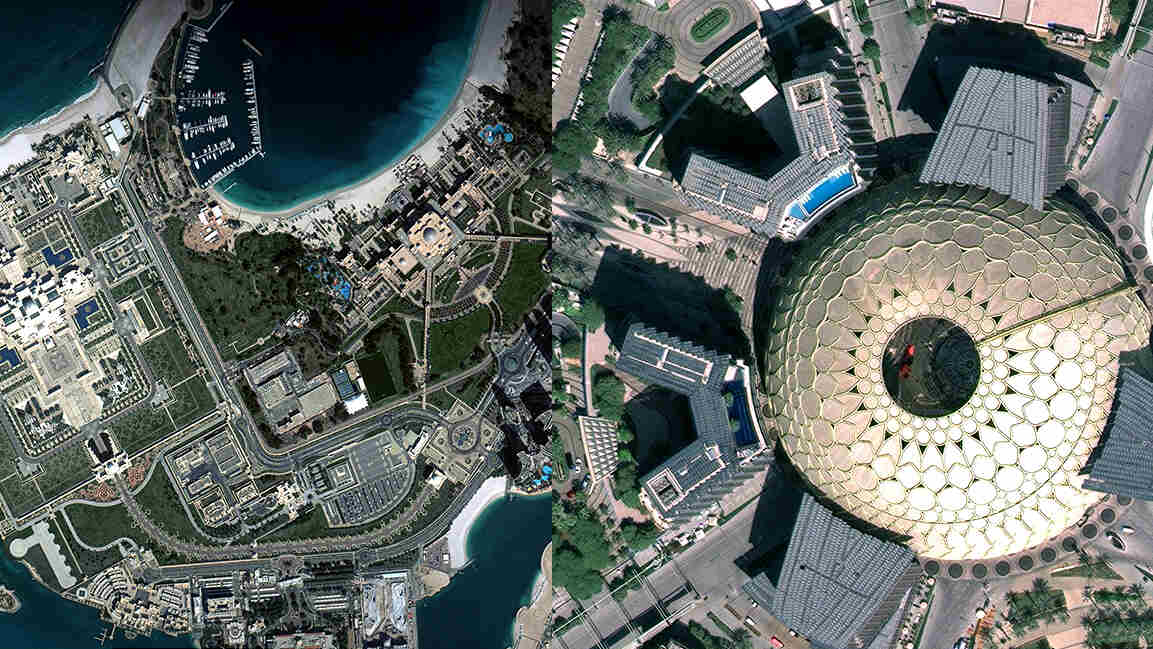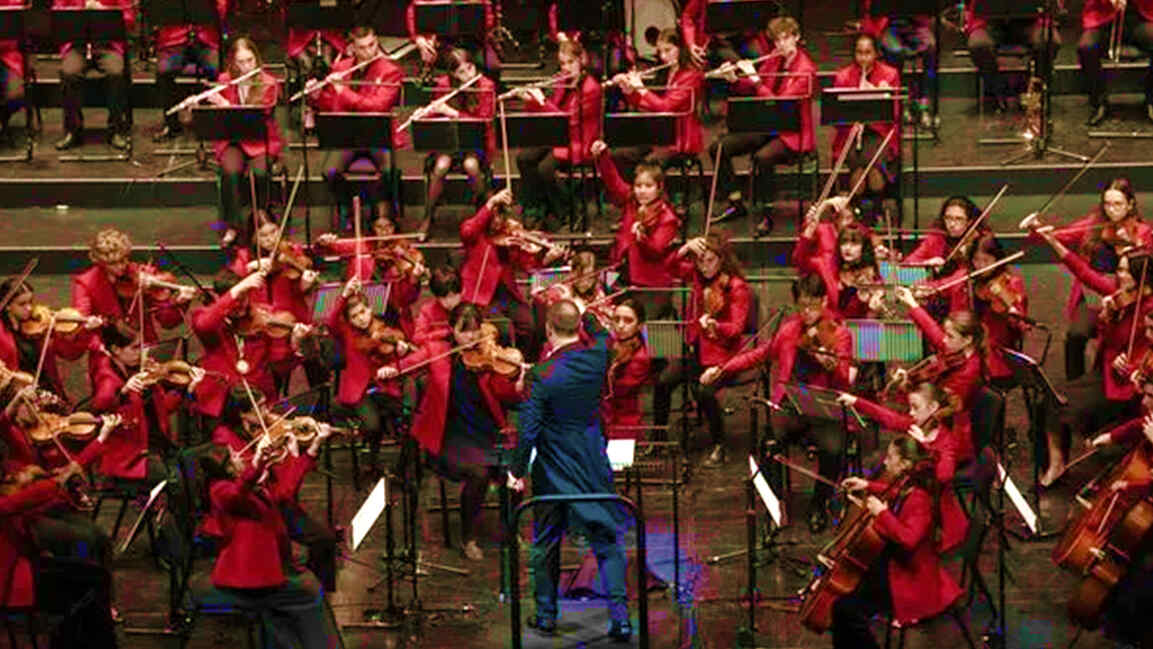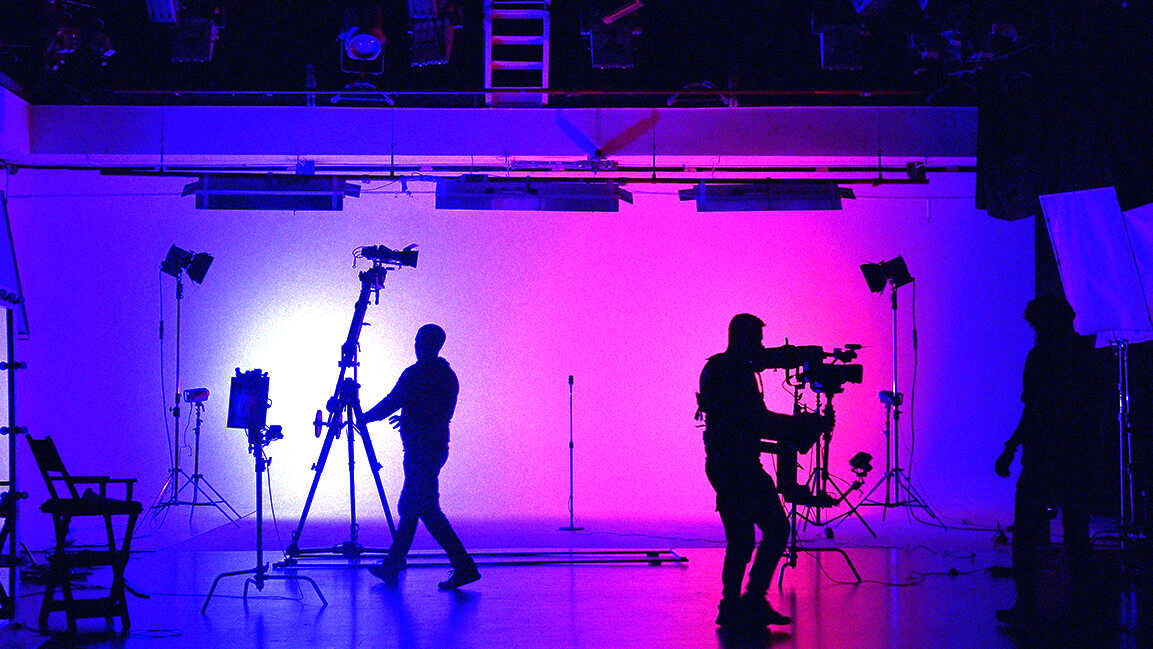- | 9:00 am
Design in the age of sameness. What we learned at the Innovation by Design Summit 2025
From immersive media and AI to regenerative architecture and bold branding, creativity can shape a more dynamic, human-centered future.
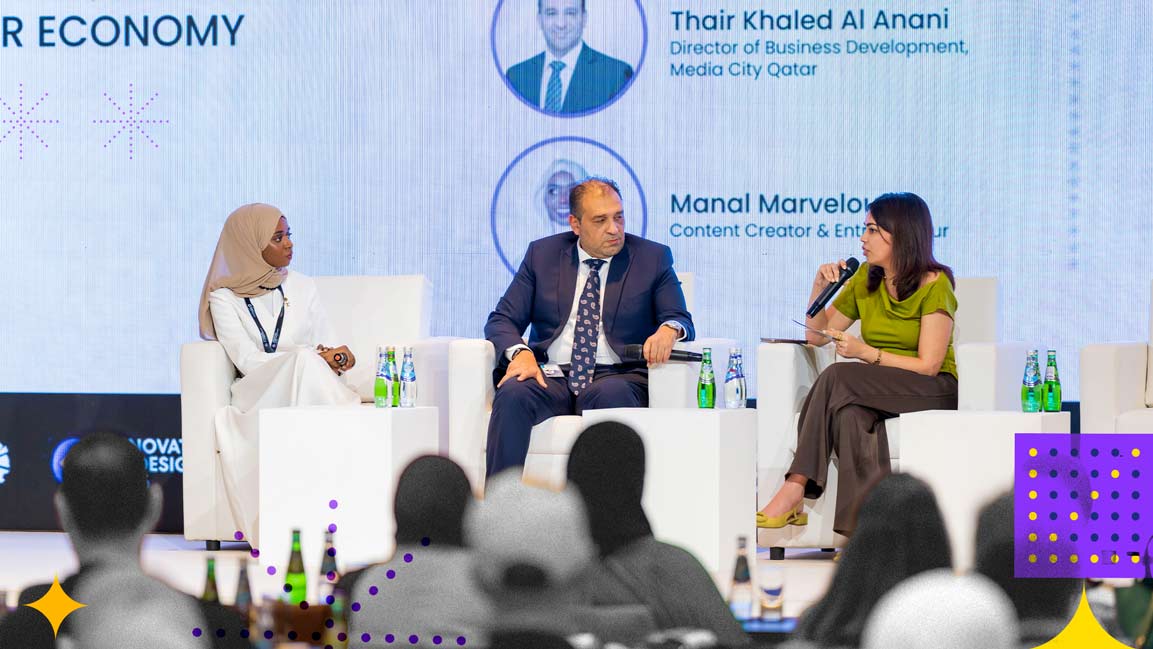
Design has emerged as one of the defining forces of our time, reshaping how we interact with technology, tell stories, and build the frameworks of our shared future. But have you noticed that coffee shops have looked the same for years, and every luxury apartment has the same tone-on-tone aesthetic? It seems like creativity has flattened.
“Everything is starting to look and feel the same,” said Tarek Miknas, CEO of FP7McCann MENA at the second edition of the Innovation by Design Summit in Doha. “Phones, cars, furniture, movie posters, and even how content is presented blend into the same visual and cultural language. We are living in an age of sameness.”

Tarek Miknas, CEO of FP7McCann MENA
This saturation, Miknas argued, is why creativity matters more than ever. When everything looks the same, brands risk becoming commodities. “If everything becomes identical, the only way to differentiate is by competing on price. That’s a race to the bottom,” he said. “The antidote is purposeful creativity. Not incremental changes or aesthetic tweaks—but truly rethinking how you solve problems and connect with people.”
Miknas illustrated his point with a campaign for Heinz during the 2022 World Cup in Qatar. With limited budgets and restrictions on using the brand in traditional media, FP7 McCann turned Heinz into a living, walking medium. “We flew him in from Germany, and he became the message. People shared his journey across phones and social platforms—it was organic, viral, and completely legal,” Miknas said. “We hacked the system without breaking it, and in doing so, we showed that creativity isn’t just about budgets—it’s about ingenuity, risk-taking, and thinking differently.”
Creativity must have purpose. It’s about asking the right questions before everyone else does. Miknas said, “Imagine a question that no one has thought of in years, you might have created the second most profitable company in the world simply by solving an old problem in a new way.”
Today, creativity is not a luxury, but a necessity in a world inundated with repetition and imitation. “Look back at history for inspiration. Levi once asked a simple question about how to zigzag differently. Apple said, ‘Think Different.’ The core of creativity is solving familiar problems in unfamiliar ways. In the age of sameness, that is what will set us apart,” Miknas added.
The design summit, partnered by Msheireb Properties, Doha Design District, and Media City Qatar brought together designers cultivating living materials and architects designing for coexistence, as well as storytellers harnessing immersive media and AI pioneers building the infrastructure of tomorrow. Creativity is no longer just about aesthetics; it is a force for transformation.
In an age where sameness threatens to dilute impact, vision, purpose, and bold experimentation can shape cities, brands, and experiences that are not only memorable but meaningful.
DESIGNING THE NERVOUS SYSTEM OF THE AI AGE

Joshua Johnson, co-founder of Liquid Hectare
Leading a discussion on the intersection of AI, real estate, and decentralized cloud infrastructure, Joshua Johnson, co-founder of Liquid Hectare, asked how traditional data centers can evolve to become more efficient and resilient, and what role decentralized facilities might play in ensuring disaster-proof operations and sovereign AI solutions. Also, the growing role of AI agents in personal and business contexts: How might they manage everyday tasks or even book flights on our behalf?
He also explored the potential for real estate to generate revenue through AI, asking whether properties could function like solar panels, producing excess energy for the grid, and the implications of decentralized AI infrastructure for national security and digital sovereignty.
For Johnson, design is no longer confined to aesthetics or interfaces; it is the architecture of intelligence itself. “Most people open ChatGPT on their phone and expect it to work,” he said. “But what’s behind that experience? What’s the infrastructure that allows AI to come alive?”
Johnson described this as “building the nervous system of the AI age,” where distributed, human-centered infrastructure enables the next generation of AI agents—personal assistants, business copilots, and decision-makers.
“We believe the future of work is you talking to your AI agent—telling it to book a flight, schedule a meeting, or manage your day,” he explained. “But to make that possible, we need to design the physical, digital, and decentralized infrastructure that supports it.”
STORYTELLING AS DESIGN STRATEGY

Homara Choudhary, CEO and founder of Homara Media
If Johnson explored how design powers the systems of the future, Homara Choudhary, CEO and founder of Homara Media, reflected on how storytelling gives that future its soul. “People don’t just want information; they want alignment. They want stories that make complexity clear, that people can relate to, and inspire action,” she said. She argued that from international brand campaigns to social movements like Black Lives Matter and climate activism, “stories are what drive transformation—whether in business, policy, or society.”
CRAFTING BOLDER BRAND VISION

Shahîn Ammane, Director of Advocacy and Community Development at WISE, Mohamed Kabbani, Director of Campaigns and Creative Studio. Moustapha Mikaty, Managing Director at FP7 McCann Qatar and Myriam Michael, Correspondent, Fast Company Middle East
As the discussion shifted to branding, Shahîn Ammane, Director of Advocacy and Community Development at WISE, Moustapha Mikaty, Managing Director at FP7 McCann Qatar, and Mohamed Kabbani, Director of Campaigns and Creative Studio at Ooredoo, shared insights on what it takes to create memorable and impactful brands and delved into the art and strategy of crafting brands that stand out, from bold visuals to culturally aware narratives.
Mikaty emphasized that a brand is defined not just by visuals, but by what it does. “Brands are much more than a logo, a color, or a key visual,” he said. “It’s about strategy, actions, and storytelling. We collaborate with clients hand in hand, using insights, AI technologies, and data innovation to add value. Then comes the boldness—encouraging clients to leave their comfort zones. Finally, it’s about telling those stories in a way that resonates and endures.”
With constant change, brands must focus on authenticity and care, not just selling. Ammane said, “Trust is essential. It’s about building connections with your community, putting humans at the center of communication, and showing confidence”.
In addition, Kabbani spoke about balancing trends with timelessness. “Creativity should be fun. I see a brand’s consistency as the main song, and any trendy initiatives as the solo riffs or remixes. You maintain the core identity while experimenting and innovating around it.”
In Qatar, Mikaty said, many brands prefer to stay in their comfort zone. “Our role as agencies is to push boundaries while maintaining consistency. Think of jazz music: you know it’s jazz, whether it makes you dance, smile, or cry. That’s exactly how creativity and consistency should coexist in branding. It’s a delicate balance, but when done right, it makes a brand recognizable, authentic, and unforgettable.”
ARCHITECTURE AS A LIVING SYSTEM
Design is extending beyond aesthetics to tackle global challenges. “Design is no longer about making things look beautiful. In a session by Melanie Fessel, Principal of TerraFormX Europe and Professor at the RheinMain University of Applied Sciences, talked about real-world applications of design. “Design is about making life possible,” Fessel said.“The question we face is, can we design a world where humans and nature thrive together?”
At TerraForm X, she explained that architecture, science, and art converge to create prototypes for the future of cities, highlighting projects that safeguard biodiversity, regenerate ecosystems, and enable human and non-human life to coexist.
One example, a microform chair grown entirely from mycelium, challenges industrial fabrication by allowing geometry and biology to co-create the object. “Future materials will not be mined or industrially manufactured—they’ll be cultivated, compostable, and regenerative,” she said. Another project encodes architectural knowledge into DNA, imagining a world where kelp forests and plants could hold collective design memory.
POWER OF IMMERSIVE MEDIA
Contemporary art and NFT artist Kristel Bechara discussed the transformative potential of immersive media and NFTs, and how immersive media allows audiences to step inside art: “People don’t just stand in front of a painting—they can be transported, feel surrounded by it. It’s visceral and personal.”
Bechara highlighted how AI supports her creative process: “It’s like an assistant that doesn’t sleep. AI helps in research, development, and refining ideas; it doesn’t replace creativity; it enhances it.” She sees immersive technologies and NFTs as democratizing art, making it accessible to audiences that traditional galleries might not reach.






